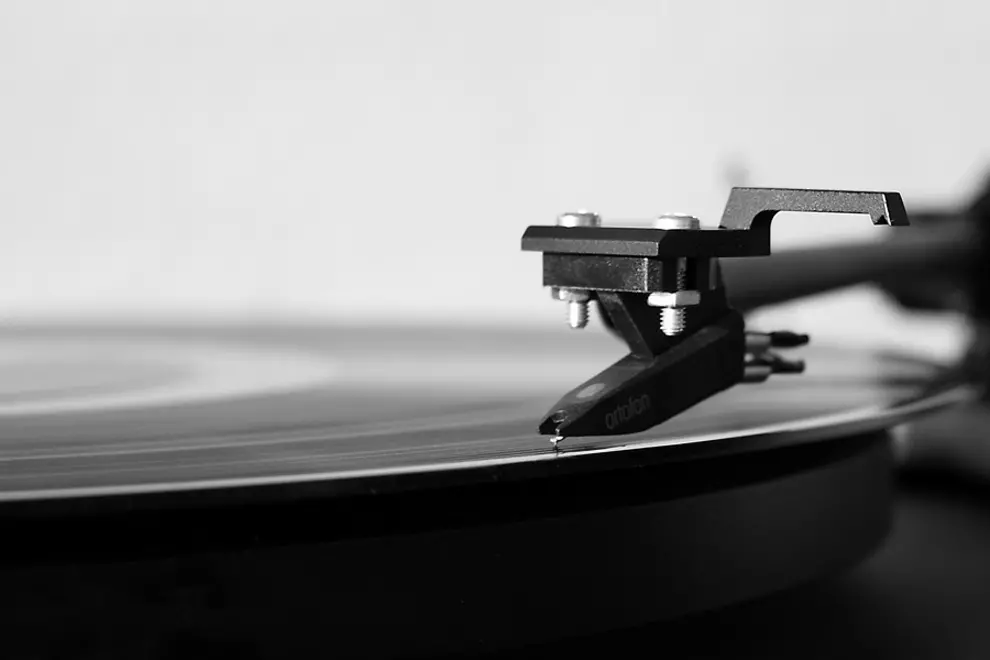 The Music's Best Record Store
The Music's Best Record StoreThe Music tapped vinyl and high fidelity sound expert The Discerning Listener to take us through the dos and don’ts when selecting your first record player. By considering these factors, you will be setting yourself up for a lifetime of great listening.
Selecting your first Turntable
How do I choose the right turntable for my listening habits?
Choosing your inaugural turntable isn’t just a spec-sheet exercise—it’s a rite of passage. You’re matching a machine to the way you feel music, the room you live in, and the path you plan to travel as a listener. Taste, lifestyle, upgrade itch, and wallet all jostle for pole position. Get the balance right and every record feels like a fresh discovery; miss the mark and you’ll be fixing rather than spinning. Here’s the compass—ten essentials that steer you toward the deck that fits today and still thrills tomorrow.
First Deck, Best Deck A Discerning Listeners' field-guide for anyone buying a turntable that grows with you, not against you—whether it’s your very first spinner or the “I-wish-I’d-known-better” second attempt.
Turntable As A System
Before diving into technical details, it’s important to see the turntable not as a single component, but as a dynamic, integrated system—one that evolves along with your listening habits.
Don't miss a beat with our FREE daily newsletter
Choosing the right turntable goes beyond selecting a deck or cartridge. It’s about building a system that matches your personal sound preferences and lifestyle needs. When you view your turntable as a complete system, consider the following key factors:
Define Your Listening Priorities: Whether you’re an audiophile chasing every nuance in your record collection or a listener who prefers a plug-and-play simplicity, your individual usage patterns and desired sound quality set the foundation for your system’s design.
Budget and Investment Considerations: Entry-level turntables may attract you with a lower upfront cost, but remember that a modular composite system—while more expensive initially—allows for gradual upgrades, ensuring your setup stays aligned with your evolving expectations and delivers long-term ROI.
Material, Build Quality, and Durability: A system built with high-quality materials (like those found in premium modular composite turntables) minimizes unwanted vibrations and ensures durability. In contrast, entry-level plastic models might suffice for casual listening but often lack the robustness to support critical listening and future upgrades.
Upgradeability and Future-Proofing: One of the greatest advantages of viewing your turntable as a system is its inherent scalability. As new and improved components become available, you can swap out parts like the tonearm, cartridge, or motor, fine-tuning your system along the way.
Practical Considerations and Integration: Lastly, think about where your system will live. Consider room acoustics, available space, and how your turntable will interface with other audio components. A system that’s easy to maintain and tailor ensures your investment continues to grow with your passion for vinyl.
This holistic approach not only refines the sound but also transforms your listening experience into a personal journey of continuous improvement. For more insights into this philosophy, click here.
Introduction - Your Needs Before The Numbers
Selecting a turntable is equal parts personal ritual and engineering choice. You’re matching a precision machine to the way you feel music, the room you live in, and how far down the audiophile rabbit hole you plan to burrow. Get the balance right and every record feels brand-new; miss it and you’ll spend more time fixing than spinning.
Start with two honest questions.
How do you actually listen? Couch-bound immersion, background ambience, or occasional DJ sets?
Do you chase upgrades or crave simplicity?
Lock those answers in first; every choice below snaps into focus.
Understanding the Key Components
Before diving into the essentials, it helps to break down some of the core components of a turntable in simple terms:
Tonearm: This is the mechanical arm that holds the cartridge and stylus, guiding them over the record’s grooves. Think of it as the “flick” of an artist’s brush—its precise movements are key to translating record grooves into sound. Modern tonearms often allow adjustments to the vertical tracking angle (VTA), azimuth (the angle relative to the record surface), and anti-skate settings, all of which ensure your needle tracks correctly and reduces distortion.
Headshell: Often attached at the end of the tonearm, the headshell is where the cartridge sits. Some tonearms feature an integrated (one-piece) headshell, while others allow for a separate, detachable headshell for more flexibility and upgradeability. Keeping the headshell separate can help you swap cartridges with ease.
Phono Stage: The phono stage acts as a preamplifier. It boosts the minuscule signal from your cartridge to line level—essentially translating the delicate vibrations picked up from the record into sound that can be amplified and enjoyed.
Base Components: Plinth, Platter & Sub-Platter:
Plinth: This is the solid body or chassis of the turntable. It’s designed to be heavy and well-damped, absorbing room vibrations and preventing unwanted noise from interfering with your playback.
Platter: The platter is the spinning disc on which you place your record. Its weight and material are critical; a heavy, well-designed platter minimizes speed fluctuations, providing a steady rotation.
Sub-Platter: In some high-end designs, an extra layer—called the sub-platter—is sandwiched between the motor or suspension system and the visible platter. This added layer further isolates vibrations and ensures smoother motion, enhancing overall sound fidelity.
Bearings: Often tucked away yet incredibly crucial, bearings are found at the heart of your turntable's rotation mechanism. They support the platter with minimal friction to enable smooth, consistent spinning. High-quality bearings reduce wobble (or run-out) and help maintain speed accuracy—key factors in preserving sound integrity. When evaluating a turntable, consider the design and serviceability of its bearings to ensure lasting performance.
These straightforward definitions are here to give even the newest listeners a grasp of what each part does.
These explanations are meant to clarify each term for those new to turntables, ensuring that both newcomers and seasoned enthusiasts can appreciate the mechanics behind quality sound reproduction.
Enjoy the discovery process!
Tonearm Options and Adjustments
Tonearms come in various styles, each with its own set of benefits. Here's what you need to know:
One-Piece vs. Two-Piece Tonearms: A one-piece tonearm offers robust construction and reduced resonant interference because it’s built as a single unit. In contrast, a two-piece design separates the headshell from the main tonearm body. This allows for easier upgrades—by swapping out just the headshell or cartridge without replacing the entire tonearm.
Separate Headshell: A detachable headshell lets you experiment with different cartridges. It also provides more flexibility in fine-tuning the tracking of your record. If you’re serious about optimizing sound quality, a separate headshell is a valuable feature.
Key Adjustments—VTA, Azimuth, and Anti-Skate:
VTA (Vertical Tracking Angle): Adjusts the angle at which the cartridge sits relative to the record.
Azimuth: Refers to the tilt of the cartridge in relation to the groove, ensuring the stylus is aligned for maximum contact.
Anti-Skate: Counters the inward pull on the tonearm, helping maintain even tracking pressure across the record’s surface.
Correctly setting these parameters is crucial for preserving sound fidelity and extending the life of your stylus. They are the fine details that turn a good listening experience into a great one.
Ten Essential Decisions
Drive Topology — Texture vs. Torque
• Belt-drive: Lower motor noise and velvety black backgrounds, but belts stretch and start-up is leisurely.
• Direct-drive: Quartz-locked pitch, instant spin and DJ-proof durability, yet poorly damped motors can leak noise. Ignore brand mythology; a well-damped direct-drive often outperforms a bargain belt deck. Listen, don’t label.
Tone-arm — The Fulcrum of Fidelity Must-haves:
• Adjustable VTA, azimuth and anti-skate. If you can’t dial those in, even a thousand-dollar cartridge steps off the stage.
Cartridge Lane — Keep It Standard
• Insist on a ½-inch or P-mount headshell. Today’s bundled cart gets you started; tomorrow’s swap keeps you smiling. Remember, if it can’t be changed out, your cheap turntable might be more expensive when you need a whole new turntable to upgrade.
Phono Stage — Convenience vs. Headroom
• Onboard preamps are handy, but they cap performance fast. Choose a deck without onboard phono stage, (if budget allows) or a defeat/bypass switch so an outboard stage can join the party later.
• Remember the output of a cartridge is extremely low, the less connections, switches, and circuitry between the cartridge and the phono stage the better.
Speed Accuracy — Pitch Is Everything, Don’t Let Piano Notes Sigh
• Aim for wow-and-flutter of ±0.25 % or better. Verify with a strobe app or 3 150 Hz test tone. Pitch drift is the silent killer you only notice once—and never forget.
Isolation — Footfalls Are the Enemy of Groove
• Bouncy floors? Choose a suspended sub-chassis (think Linn, Thorens). Less budget friendly, but better than constantly skipping records.
• Consider wall mount brackets as an option; check with the building’s construction regarding floor/wall fixing methods.
• Solid floors? Go with a mass-loaded plinth with compliant feet. Solve this first; rumble lives in the infrasonic basement.
• Consider aftermarket constrained layer dampers.
Serviceability — Buy Tomorrow’s Spare Parts Today
• Belts, bearings, motors—will you still find them in ten years? If the maker hides service documents, walk away. A turntable should be a mechanical heirloom, not disposable tech.
Upgrade Ecosystem and Resale Gravity
• Brands with active mod communities—like Rega, Technics, Pro-Ject, and VPI—hold their value because enthusiasts orbit them. Even if you never tweak, that gravitational pull protects your investment when it’s time to level-up.
Ergonomics & Aesthetics — The Deck Lives in Your Space
• Measure dust-cover clearance, arm swing radius, and shelf depth. A gorgeous deck that doesn’t physically fit becomes sculpture, not equipment.
Budget Ratio — 40 / 40 / 20
• Allocate roughly 40% to the deck, 40% to the cartridge plus phono stage, and 20% to accessories (isolation base, carbon brush, stylus cleaner, anti-static sleeves). Overspending on the plinth while underspending on the stylus creates a high-definition bottleneck.
Quick-Spin Checklist (Take This Shopping)
• Bring a record you know inside-out; its quirks expose a deck’s character.
• Listen for the lead-in pop—it reveals surface-noise rejection.
• Work the cue lever; it should descend like a paintbrush, not a guillotine.
• Confirm the return policy; floor-borne rumble sometimes appears only after a few days at home.
Parting Groove
Your first (or second-chance) turntable should open doors, not dig money pits. Nail the mechanical basics, leave room to upgrade, and you’ll spend the next decade crate-digging instead of troubleshooting.
Need a sanity check before the card tap? Book an unbiased consultation at TheDiscerningListener.com.au—where gear lust meets grounded advice.
Happy spinning. “Heard by few, felt by all.”
















